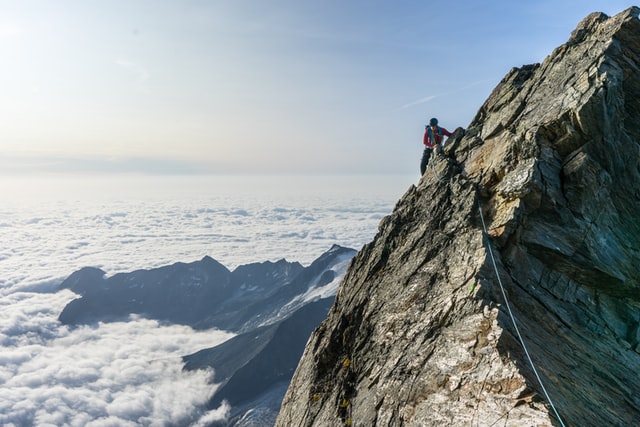
מִי יַעֲלֶה בְהַר-ה', וּמִי יָקוּם בִּמְקוֹם קָדְשׁוֹ? (תהילים כ"ד:ג)
“Who may climb God’s mountain? Who may stand in His holy place?” (Psalms 24:3)
What is the significance of these two activities — climbing and standing - on God’s mountain?
Ascending in Knowledge
We use our legs to advance forward, to walk and climb. We also use them to stand in one place. Each of these two functions, climbing and standing, is a metaphor for a specific form of Divine service.
“Climbing God’s mountain” suggests a spiritual ascent, as we strive to gain greater enlightenment and refinement of character. Torah study in particular is associated with spiritual advance, by acquiring wisdom and ethical insight.
Therefore, the Sages called Torah study a derech. It is a path upon which we progress and advance. As Hillel taught, it is a never-ending journey of spiritual ascent: “One who does not add [to his Torah knowledge], ceases” (Avot 1:13).
Standing in Prayer
And which Divine service corresponds to “standing in His holy place”?
When we walk or climb, our legs are apart. We make progress, but our position is less secure and less stable.
When we stand, on the other hand, our legs are joined together. Standing indicates a state of stability and balance.
Spiritually, “to stand” is to absorb that which we have learned and grasped. This is a critical part of Divine service, when we reinforce our spiritual acquisitions. By ingraining these attainments in the soul, we ensure that we will retain them, despite life’s trials and vicissitudes.
If Torah study is the way we climb God’s mountain, then prayer is the way we stand in that holy place. In fact, the central prayer is called the Amidah — “the standing prayer.” The function of prayer is to internalize our spiritual accomplishments, as we examine ourselves and reflect on our true goals and desires.
For this reason, the Sages taught that we should pray standing, with our legs together. When praying, we are like angels, who are described as having a single, straight leg: “their leg was a straight leg” (Ezekiel 1:7). Angels do not progress in holiness. Their very essence is one of maintaining their level of spiritual perfection. When we pray, we emulate the angel’s stance of unity and harmony, of being at one with our spiritual state.
In Torah study, we aspire to attain higher levels, to ascend God’s mountain. This requires exertion and effort, like a climber scaling a high mountain. Standing, on the other hand, indicates a more relaxed, natural position. This is the state of the angels, effortless in their inherent holiness. Through prayer, we seek to internalize our spiritual attainments, until they become natural and ingrained traits in the soul.
(Adapted from Ein Eyah vol. I, p. 61. Photo: Jef Willemyns via unsplash.com)





